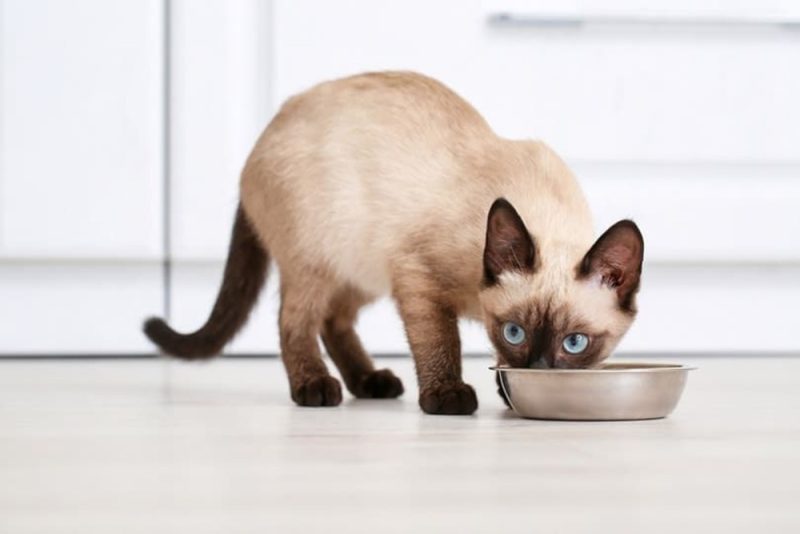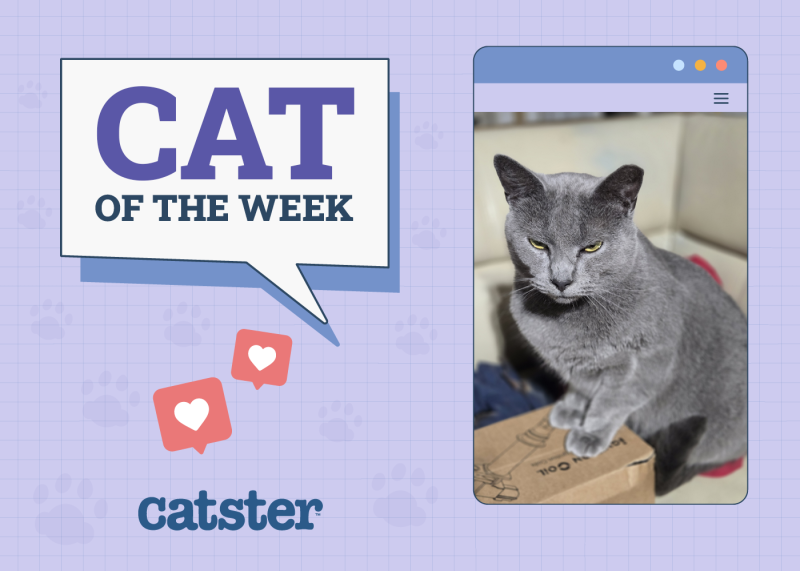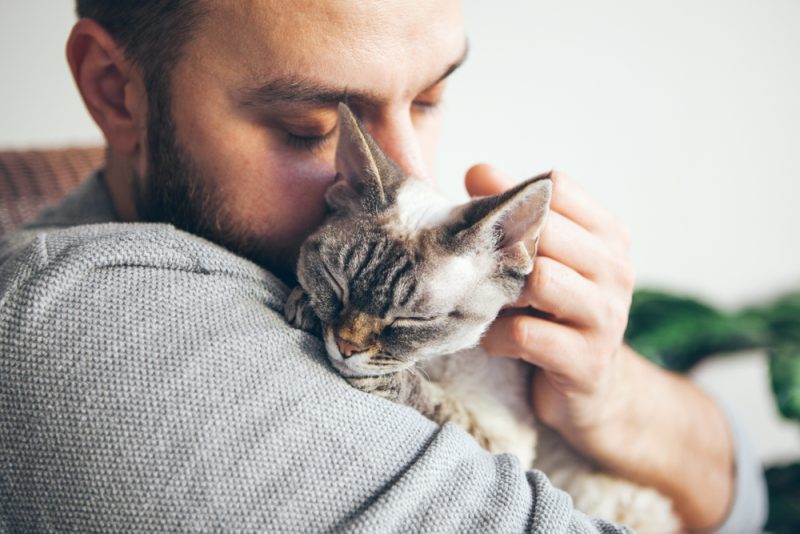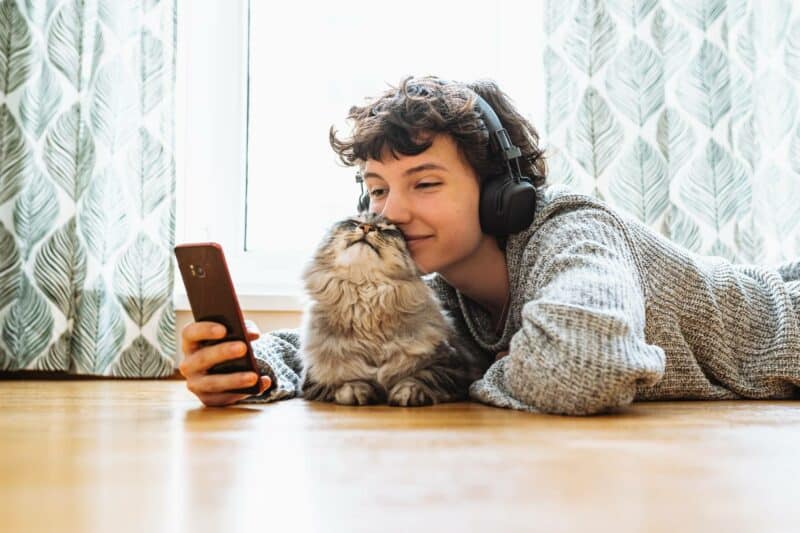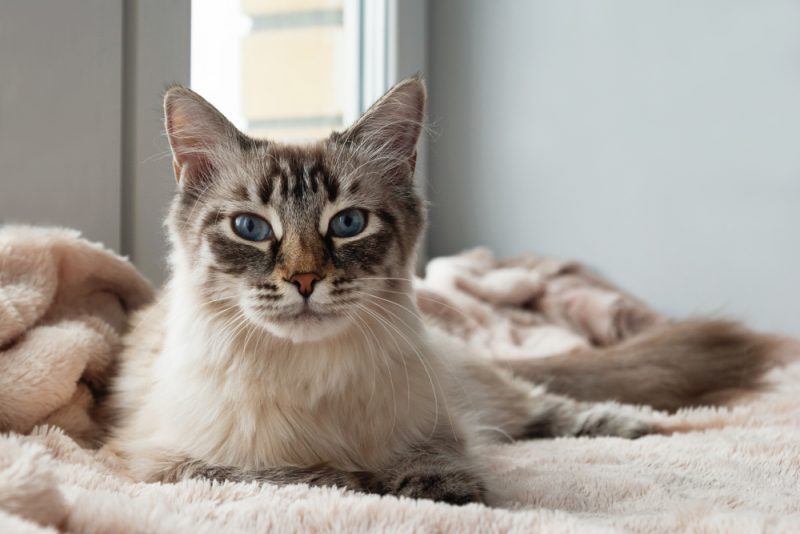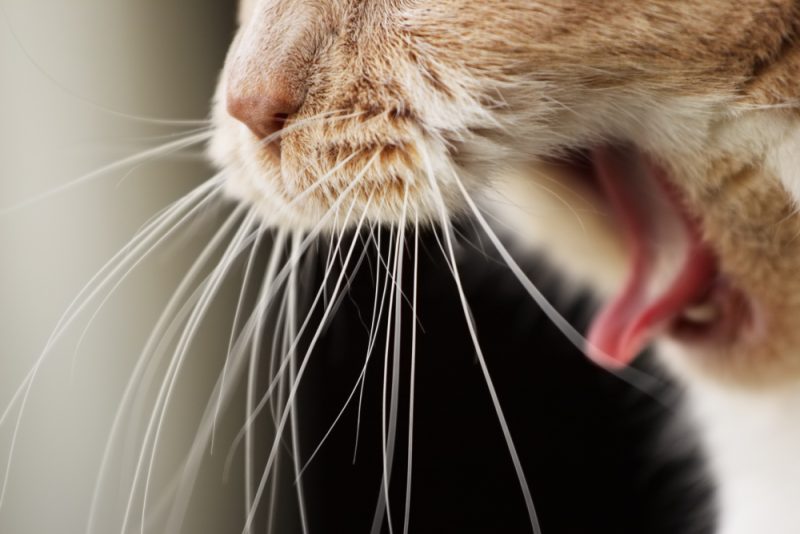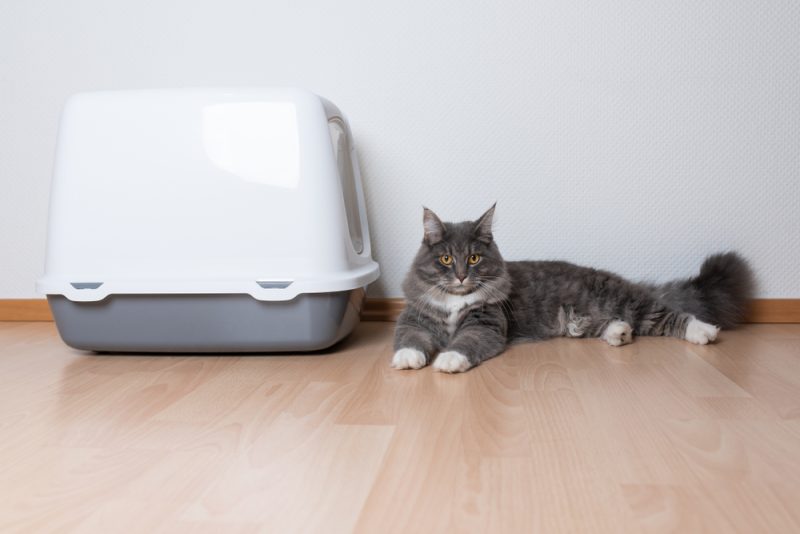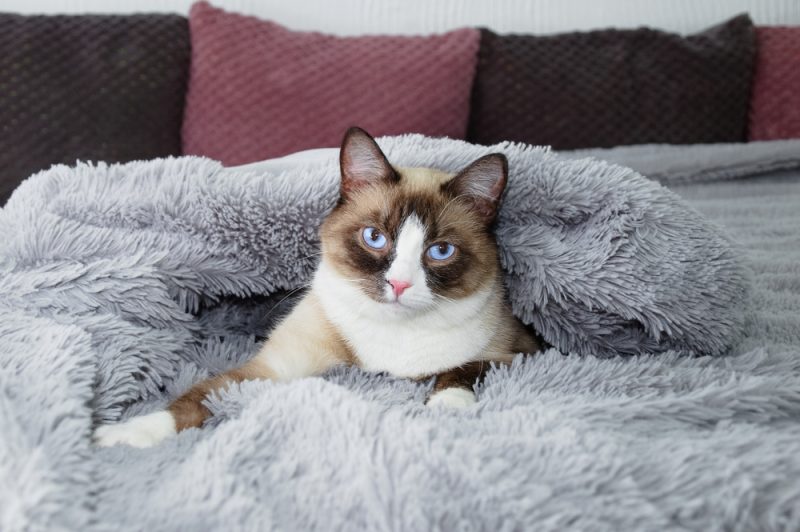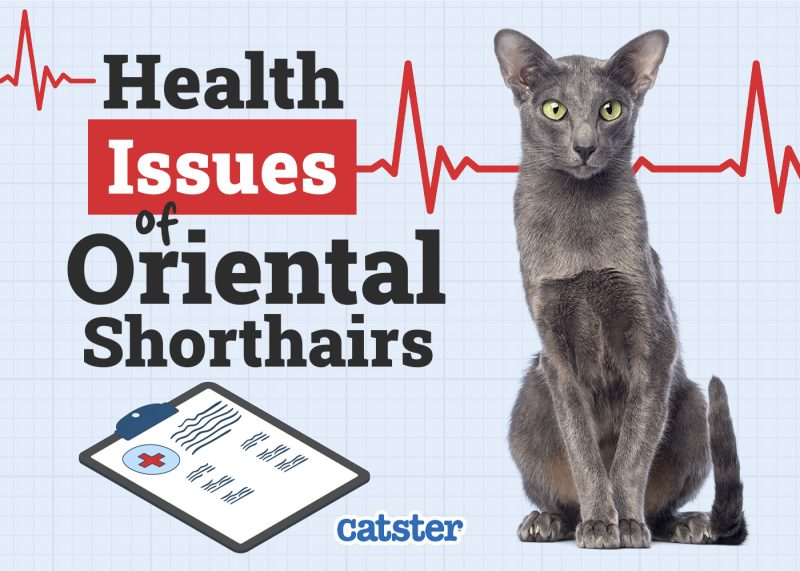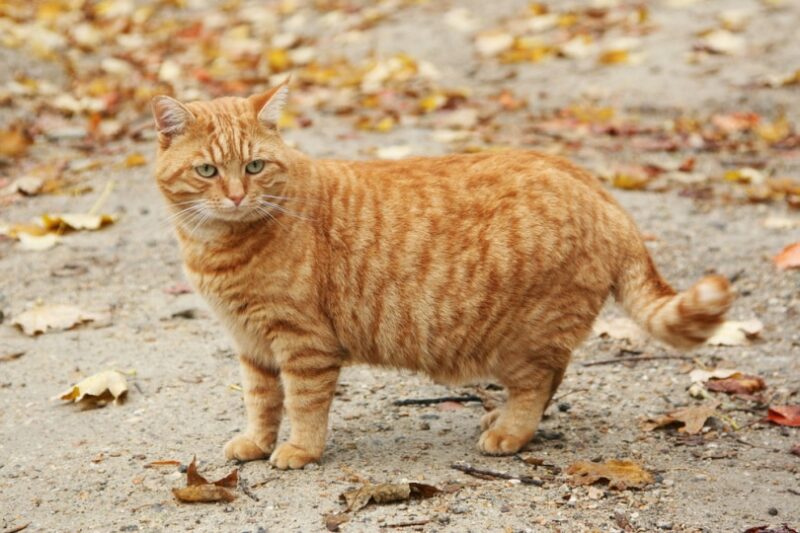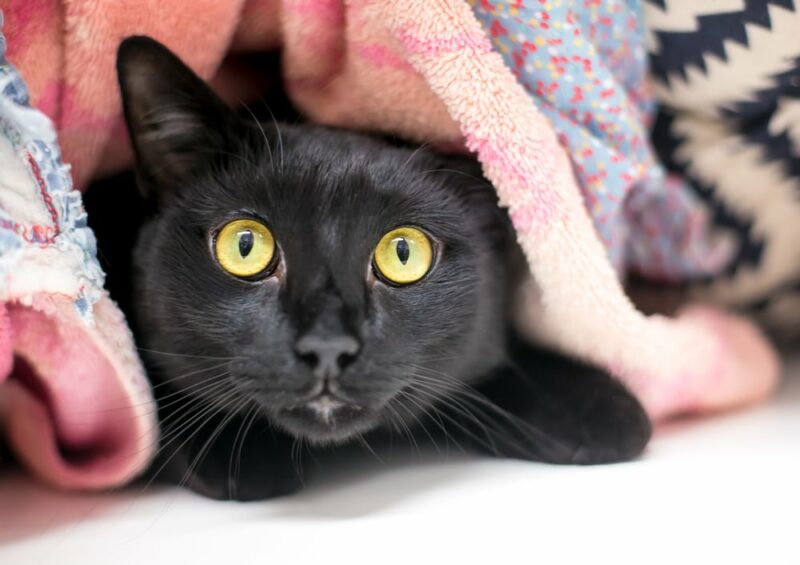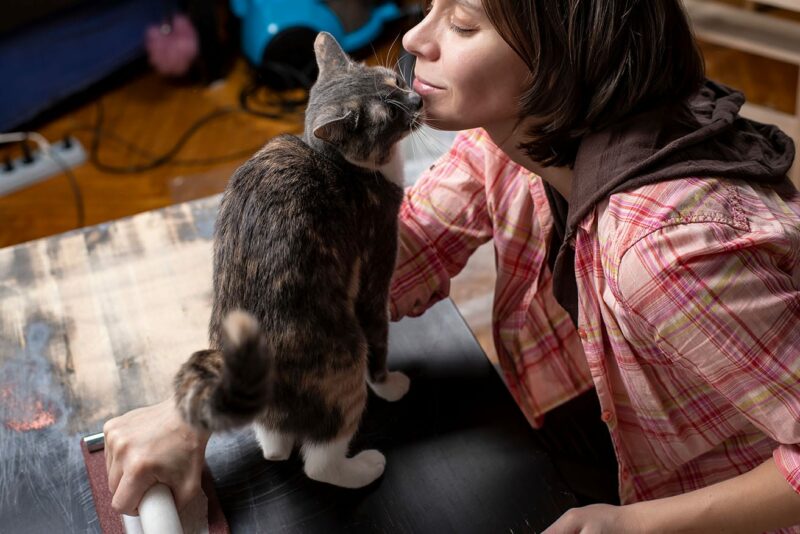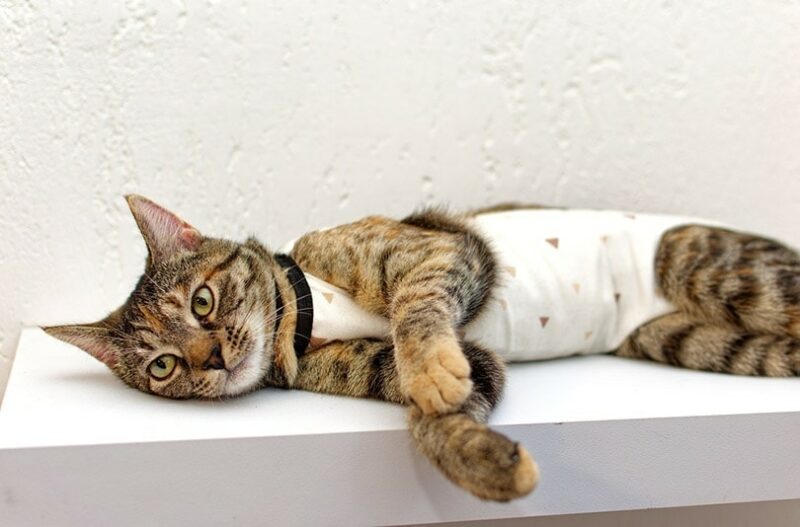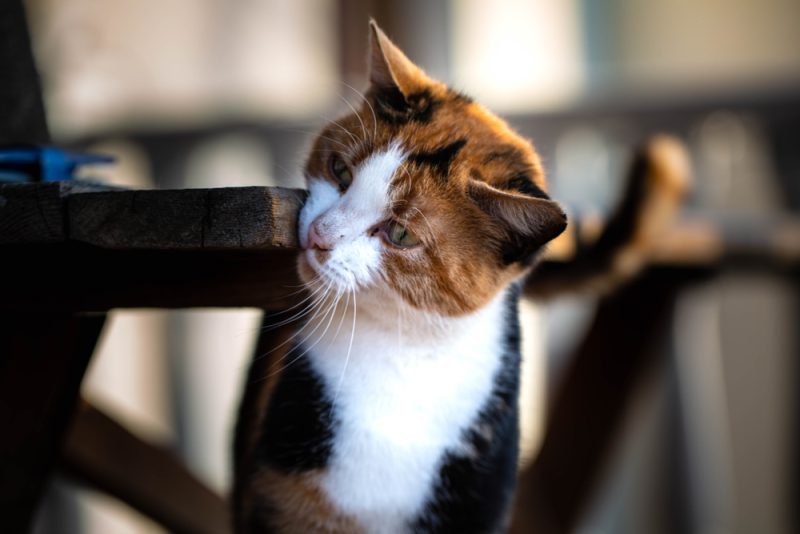Cats are in touch with their wild side. You’ll see examples in their behavior, which may seem inappropriate in the home setting, but served them well at a different time. Survival is the primary motivator for most instinctive behaviors, which can explain many traits in your pet, including food aggression.
Even though your home is a far cry from the African savanna, cats still view getting food the same way. The trick is to find out what’s causing your pet to guard their food and eliminate or lessen the effect of the trigger.

What to Understand About Food Aggression in Cats
Cats can be fickle creatures, but you probably know that already. One minute they’re loving and smoochy, the next they’re attacking hands, cats, or anything in their way! And if they are taking a swipe or having a grumble at anyone approaching their food, it can take a while to get matters under control. Remember that instinct is in the driver’s seat when your cat is guarding their food. While you may think it’s only a behavioral issue, your pet’s physical health can sometimes play a role. To give you a better idea of what food aggression looks like, here are some possible signs that a cat has food aggression:
- Guarding the food bowl
- Swatting or striking if food is out
- Hissing, growling, or swatting during feeding times
- Stealing food
- Searching through the trash for food
- Terrorizing other pets or people in the house and chasing them
- Begging for food regularly
- Excessive vocalization
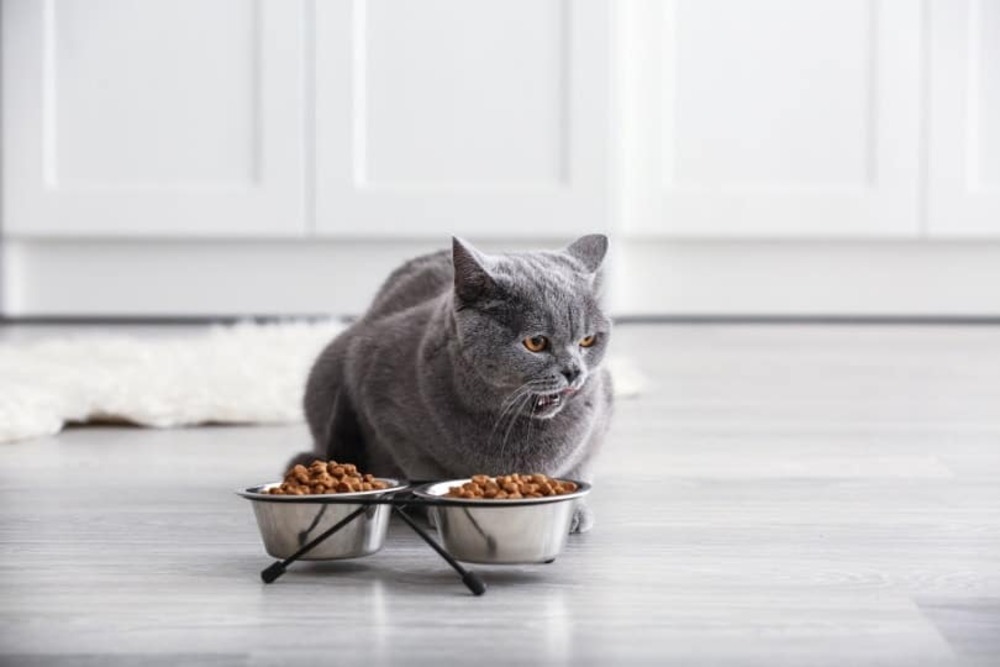
Now that you understand what to look for, keep in mind that there are a variety of causes for food aggression in cats. While we address some of these below, here are some other common causes of food aggression:
- Was previously a feral or stray
- Communal eating in a multi-pet home
- Premature weaning
- Stress and anxiety
- Undiagnosed medical condition
Sometimes the behavior is relatively benign, and it’s not unusual for kittens or young cats to growl as they are filling their mouths with food. This is generally a continuation of normal communication amongst litter mates, telling each other to stick to their own food! It usually subsides over time as they realize that they no longer have to compete with six siblings! However, if this mealtime grumbling and growling escalates instead of diminishing, you may need to step in to stop things from getting worse.
We recommend being patient yet persistent when trying to curb this behavior. You may find it helpful to use several of our steps simultaneously. However, the most important ones are the first three, which will give you the information you need to guide your plan to stop food aggression in cats.

The 10 Steps for Identifying and Stopping Food Aggression in Cats
1. Observe Your Cat’s Behavior
Observing your kitty’s behavior is an essential first step. The purpose is to determine if it’s a one-off quirk or a brewing problem. A sleepy or sick cat may have a shorter fuse than a healthy feline. We suggest taking in the whole picture. Consider other factors influencing your household that may have an effect on your cat, such as a new pet, new home, or new furniture arrangement.
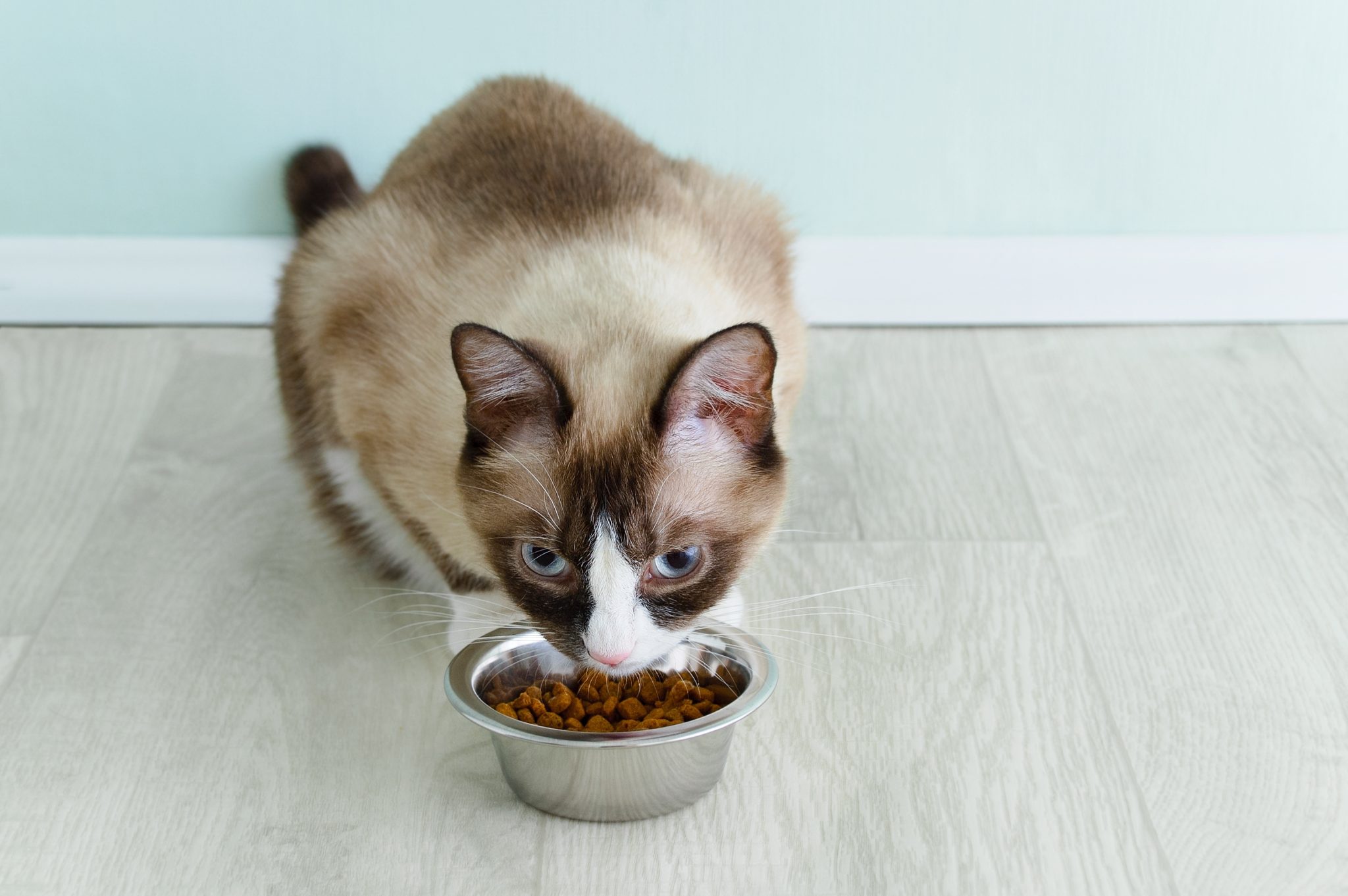
2. Look for Any Triggers to the Behavior
You should then pay attention to any triggers causing the food aggression. Resource guarding occurs when an animal perceives a potential loss to something they value. If you’ve switched to a new, more delicious food, it could cause your cat to become more protective of their favorite new meal. A child approaching a cat while they eat may also set off alarms, especially one that likes to grab things. Observing the situation closely will reveal the root of the problem when it comes to your cat’s aggression with food.
3. Make an Appointment With a Vet
We’ve discussed the role of survival in this type of behavior. If an animal is in pain or ill, this situation puts this role in overdrive. Veterinarians have documented resource guarding in pets with chronic diseases, such as gastrointestinal issues, intestinal worms or hyperthyroidism. Therefore, we strongly urge you to take your kitty to the vet when you notice behavioral changes that cannot be explained by outside changes, to rule out medical causes. Food aggression may be a sign of a problem, rather than the problem itself.
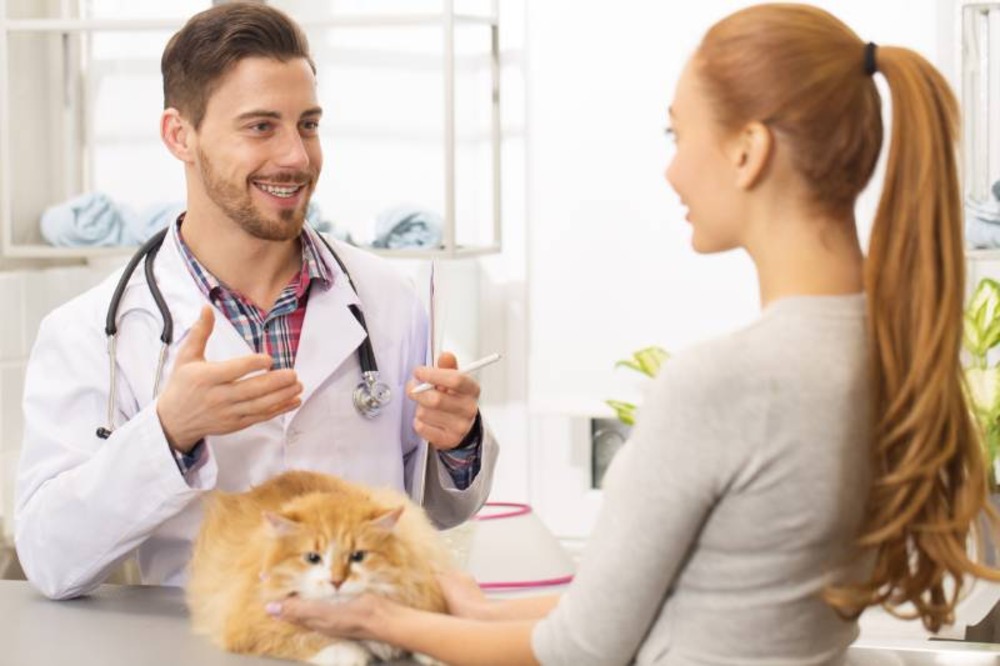
4. Separate Your Cat From The Trigger
(or the trigger from the cat)
Noting the trigger of aggressive behavior in your pet can make it easy to separate the cause from the effect. That applies if it’s another cat, animal, or child instigating the unwanted reaction. That also means separate bowls if you feed your felines from one bowl, or side-by-side. If your cat feels more secure whilst they are eating, they are far less likely to act out.
5. Move the Food and Water Bowls
Your pet may display food aggression because there’s too much traffic nearby distracting them from what they want to do; namely, eat! You may find moving the food and water bowls to a quieter area of your home is enough to put your kitty at ease. We suggest telling everyone in the household, including the kids, to leave your cat alone while they eat.
If it’s kibble, wet, or a combination of both that your cat enjoys, choosing the right cat bowl to serve it in goes far beyond presentation. Your cat's comfort is at the forefront with the Hepper NomNom Cat Bowl! The unique design benefits cats in many ways - dual stainless steel bowls are shallow and wide to aid with whisker fatigue and slight elevation for proper posture. The wide catch tray ensures that all food (and water!) stays exactly where you’d expect it to be - inside the bowl! Click here to learn more. At Catster, we’ve admired Hepper for many years and decided to take a controlling ownership interest so that we could benefit from the outstanding designs of this cool cat company!
6. Get Some Interactive Toys for Your Pet
Cat breeds vary in energy levels, with breeds like the Bengal and Abyssinian being the most active. It stands to reason that a pet that doesn’t get enough physical or mental stimulation is going to find other ways to express their wild side. An excellent way to redirect this unspent energy is with interactive toys. You’ll be surprised how much they will perk up your pet’s mood. They will look forward to it every time.
Looking for toys that will cater to the many needs of your cat? The Hepper Hi-lo Cat Scratcher is one of our favorite cat products, and it will encourage your cat to get active. Its clever three-angle design offers multiple ways for your cat to climb, stretch, and exercise. Made of a sturdy plywood base and a replacement cardboard insert, this scratcher is an option that cats can enjoy for years to come. If your cat requires a little encouragement for self-play, the Hepper Catnip Mice Toy Set is a fantastic choice for their instinctual needs. Made with natural, bite-resistant hessian fabric and filled with organic catnip. Cats can satisfy their natural prey instincts while getting the physical activity they need to thrive. At Catster, we've admired Hepper for many years, and decided to take a controlling ownership interest so that we could benefit from the outstanding designs of this cool cat company!
Image
Product
Details
Great for Exercise
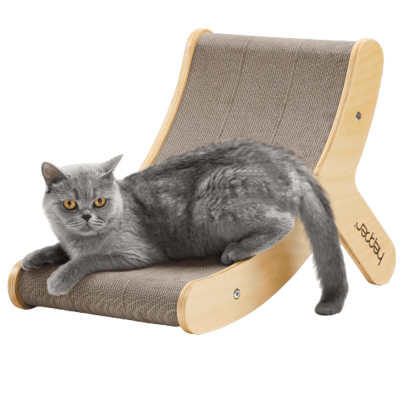
Hepper Hi-Lo Cat Scratcher
Check Price
Encourages Self-Play
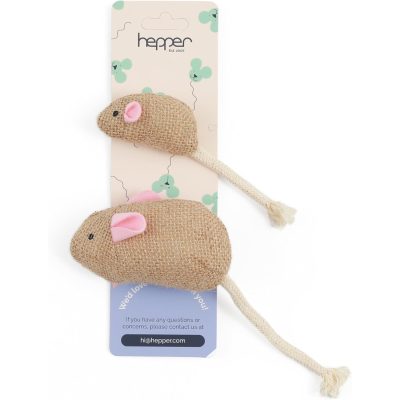
Hepper Catnip Mice Toy Set
Check Price
7. Try Using a Pheromone Spray or Diffuser
Sometimes, getting back to a cat’s roots holds the answer. Remember that felines live in an olfactory world. Pheromones can replicate those they experienced as a kitten. The result is an animal that feels calm and secure, which can help remove the insecurity behind an aggressive feline. You may find that you only need to use these products a few times to get results.
8. Switch to Small Meals More Frequently
Food insecurity can often trigger aggressive behavior. Small, frequent meals may eliminate those negative feelings since your pet will learn that the next meal is around the corner. This step may help if a new cat in the household is the cause of the problem. It can foster a positive association between the new kitty and food availability.
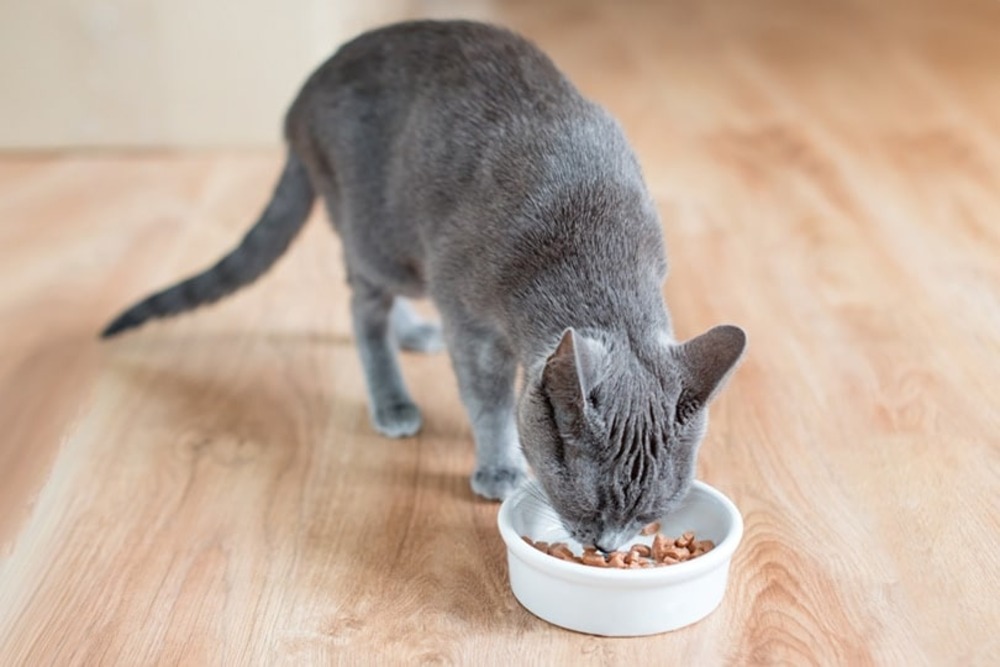
9. Neutering Your Cat
Cats approach sexual maturity around 6–8 months old. Hormones have unpredictable effects on animal behavior, and aggression and territoriality are typical results. If your pet isn’t fixed, we suggest discussing the issue with your vet. Unless you are a breeder, neutering/spaying your cats is recommended, and the procedure may curb emerging food aggression.
10. Consult an Animal Behaviorist
We recommend calling in the big guns and consulting an animal behaviorist or veterinarian if nothing has helped fix your pet’s behavior toward food. They may be able to identify issues that may not be apparent to you. We strongly urge you to try anything reasonable. Sadly, aggression is one of the top behavioral causes of pet relinquishment, but there are often different ways, even medications, that can help get control of the problem.
If you need to speak with a vet but can't get to one, head over to PangoVet. It's an online service where you can talk to a vet online and get the advice you need for your pet — all at an affordable price!


Final Thoughts
Food aggression in cats usually has an identifiable cause, whether it be medical or behavioral. Information is paramount to determining what’s upsetting your pet and finding ways to alleviate their anxieties, so observing the behavior and assessing your cat’s health is a vital part of addressing the problem. In most instances, if you can address the trigger, you can solve the issue, but it will take time and patience. Your vet is an excellent resource who can give you the advice you need, or refer you to someone who can help.
Featured Image Credit: Image Credit: Pixel Shot, Shutterstock
